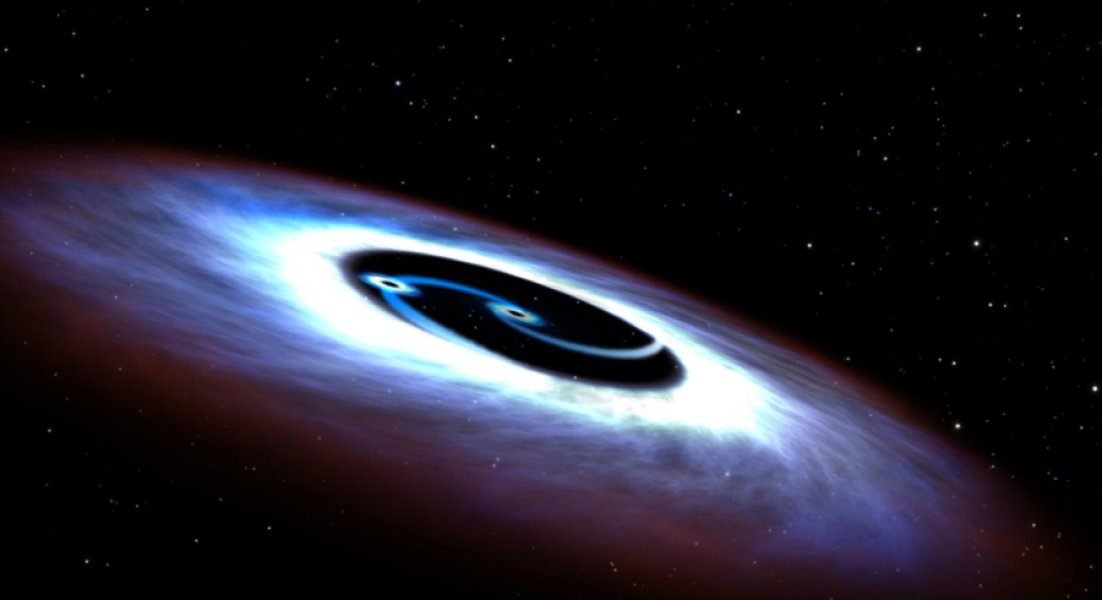FOUND: Two Giant Black Holes at the Heart of a Quasar

Whoa, double black hole! (Image: Space Telescope Science Institute)
Quasars are unbelievably bright. When astronomers first found them, they thought they might be really, really luminous stars—they can be brighter than entire galaxies—but, in fact, their brilliance comes from a different source, the black hole at the center. As black holes suck matter in, that friction and heat blooms into a massive outpouring of energy.
The closest quasar to us is Markarian 231, and two Chinese scientists just found not one but two black holes at its center. As Popular Science reports, they most likely came together when two galaxies merged. But one is smaller than the other, and over time, they should meld together into an even more massive black hole.
Scientists still aren’t sure exactly what black holes are, though. This week Stephen Hawking put forward a new theory about the black hole paradox. Even as a black hole sucks material in, it emits particles, so that over time it will evaporate. The question is: what happens to all the stuff that went into it to begin with?
Hawking’s idea that the material is stored on the event horizon, rather than in the black hole in two dimensions—it never disappears entirely. It’s an intriguing (if mind-bending) idea, but not necessarily the answer to how black holes work. (Scientific American’s whole run-down is helpful for anyone interested in the dark details here.) No matter what, though, the main advice about black holes still stands: Don’t go anywhere near them unless you want to be pounded into a pulp.
Bonus finds: A fake Goldman Sachs, a tiny crocodile being smuggled in a boot
Every day, we highlight one newly lost or found object, curiosity or wonder. Discover something unusual or amazing? Tell us about it! Send your finds to [email protected].









Follow us on Twitter to get the latest on the world's hidden wonders.
Like us on Facebook to get the latest on the world's hidden wonders.
Follow us on Twitter Like us on Facebook